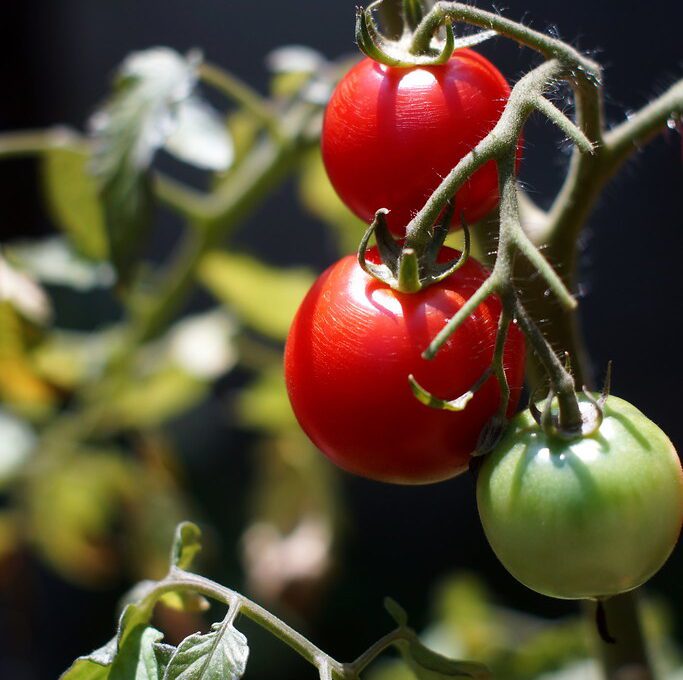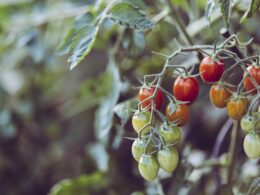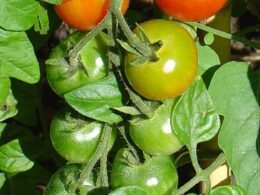You love your morning cup of coffee, but what do you do with those used coffee grounds? You might have heard that tossing them in the yard can be beneficial for your plants and soil, but is it really safe to do so?
In this article, we’ll explore the pros and cons of using coffee grounds in your garden and provide you with some guidance on how to use them correctly.
Before you head out to dump those grounds in your yard, it’s important to understand both the potential benefits and dangers they may pose. While coffee grounds can indeed provide valuable nutrients for your plants, there are also some drawbacks you should be aware of.
Join us as we delve into the world of repurposing coffee grounds for gardening purposes – ensuring that not only will your garden thrive but also keeping it a safe haven for all its inhabitants.
Benefits of Coffee Grounds in Gardening
You might be surprised to learn how your daily java can work wonders in the garden! Instead of tossing those coffee grounds in the trash, consider scattering them around your plants.
Not only will you be reducing waste, but you’ll also give your green friends a nutrient-rich boost that promotes healthy growth. Coffee grounds are chock-full of nitrogen, potassium, phosphorus, and other essential minerals that plants crave.
As they break down, these nutrients become readily available for your plants’ roots to absorb. Plus, the slightly acidic nature of coffee grounds can help balance soil pH levels – great news for acid-loving plants like azaleas and blueberries! So next time you brew up a pot of coffee, don’t just toss the grounds in the garbage.
Sprinkle them around your yard or mix them into your compost pile to create an eco-friendly and wallet-friendly fertilizer. Your garden will thank you with lush growth and vibrant blooms – all thanks to those humble coffee grounds!
Potential Downsides of Coffee Grounds
However, there may be some drawbacks to using spent java beans in your garden. While coffee grounds can provide numerous benefits, it’s essential to be aware of the potential downsides and use them responsibly.
Overusing coffee grounds or not applying them correctly can lead to issues that might harm your plants and soil.
-
Coffee grounds are acidic: Some plants thrive in acidic soil, but others don’t. If you’re using coffee grounds around plants that prefer neutral or alkaline conditions, it could negatively affect their growth.
-
Caffeine content: While minimal, caffeine present in used coffee grounds can potentially inhibit plant growth if applied excessively.
-
Mold growth: Coffee grounds can attract mold and fungi if they become too moist or are not properly composted before application.
-
Nitrogen depletion: Applying uncomposted coffee grounds directly onto the soil surface can temporarily deplete nitrogen levels as they decompose, leading to nutrient imbalances for your plants.
To avoid these issues, it’s best to practice moderation when incorporating coffee grounds into your gardening routine. Start by mixing them with other organic materials like leaves or grass clippings before adding them to your compost pile or spreading them around your plants as mulch. This way, you’ll help maintain a healthy balance of nutrients in the soil while still enjoying the benefits that spent java beans have to offer.
Taking care of our environment is crucial for our safety and well-being; therefore, being mindful about how we dispose of items like used coffee grounds plays a vital role in maintaining a sustainable lifestyle. By understanding both the advantages and potential downsides of using coffee grounds in your garden, you’re better equipped to make informed decisions on how best to utilize this resource while keeping your yard healthy and thriving!
Proper Methods for Using Coffee Grounds
So, you’re ready to give those spent java beans a second life in your garden, but how do you ensure that you’re using them correctly and effectively?
First off, don’t just toss the grounds directly onto your lawn or garden beds. While it may seem like an easy solution, doing so can create a dense layer that prevents water and nutrients from reaching plant roots. Instead, mix the coffee grounds with other organic materials like leaves, grass clippings, or compost to help aerate the soil and provide a balanced source of nutrients.
One popular method for utilizing coffee grounds is by adding them to your compost pile or bin. Coffee grounds are rich in nitrogen – an essential nutrient for healthy plant growth – which makes them a great addition to any compost mix. Just be sure not to go overboard; aim for no more than 20% of the total volume of your compost pile to be made up of coffee grounds. This helps maintain a proper balance between green (nitrogen-rich) and brown (carbon-rich) materials in your compost heap.
When applying coffee grounds around plants, remember moderation is key. Sprinkle a thin layer (about half an inch) of mixed coffee grounds around plants’ bases and gently work it into the topsoil with your hands or a fork. Avoid piling too much against plant stems as this might cause rotting issues.
By following these simple tips on properly using coffee grounds in your yard, you’ll not only recycle waste but also give your plants an eco-friendly boost they’ll surely appreciate!
Can I Use Coffee Grounds to Feed My Plants Instead of Sharing a Cup of Coffee?
Coffee and plants pair well when it comes to feeding greenery. Instead of sharing a cup of coffee, you can repurpose the coffee grounds to nourish your plants. Rich in nitrogen, phosphorus, and potassium, coffee grounds help plants thrive by improving soil texture and providing essential nutrients.
Alternative Uses for Coffee Grounds
Now that we’ve covered the gardening aspect, let’s explore some other creative and enjoyable ways to repurpose those spent java beans in your daily life! Coffee grounds are versatile, and with a little imagination, you can find several alternative uses for them that are both eco-friendly and practical. So don’t toss out those grounds just yet – read on to discover how you can give them a second life.
One fantastic way to utilize coffee grounds is as a natural deodorizer. That’s right – they’re excellent at absorbing odors! Simply place some used grounds in an open container or wrap them in an old stocking, then put it wherever you need to counteract unpleasant smells (think fridge, shoes, or even your car). Plus, you’ll be reducing waste by not buying chemical-laden air fresheners.
Another great idea is to turn coffee grounds into an exfoliating scrub for your skin. Just mix equal parts of used grounds and coconut oil (or another carrier oil), then gently massage the mixture onto your skin before rinsing it off. You’ll be amazed at how smooth and refreshed your skin feels afterward!
Don’t stop there – coffee grounds can also help clean stubborn residue on pots and pans. Simply sprinkle some damp grounds onto the surface in question, then scrub away with a sponge or cloth. The gentle abrasiveness of the coffee will lift away stuck-on grime without damaging your cookware. This method works particularly well on cast iron skillets!
So next time you brew yourself a cup of joe, remember that the journey doesn’t end when you finish drinking it: save those precious leftovers for these resourceful solutions that keep both you and Mother Earth happy!
Making an Informed Decision
Before you toss those used java beans, consider the array of eco-friendly and practical alternatives that can benefit your daily life. Throwing coffee grounds in the yard might seem like a harmless act, but there are other ways to put those grounds to good use. By being informed about how best to dispose of them, you’ll not only help the environment but also make your life easier.
One option is using coffee grounds as a natural fertilizer for your plants. They are rich in nitrogen, potassium, and phosphorus, which will help your plants grow strong and healthy. Simply mix the grounds into your soil or sprinkle them around the base of your plants.
Another idea is creating a homemade exfoliating scrub by combining used coffee grounds with coconut oil. It’s an all-natural way to rejuvenate your skin.
So next time you’re enjoying a cup of joe, think twice before throwing away those spent grounds. Instead, repurpose them into something useful or eco-friendly for both yourself and our planet’s well-being. A little effort goes a long way towards ensuring safety for future generations while making small improvements in our everyday lives.
Conclusion
So, is it okay to toss coffee grounds in your yard? Absolutely! Just remember to use them wisely and in moderation.
They can provide some great benefits for your plants, but too much of a good thing can cause problems.
Feel free to explore alternative uses for those leftover grounds as well.
Ultimately, making an informed decision about how you use coffee grounds will help keep your garden healthy and thriving.









